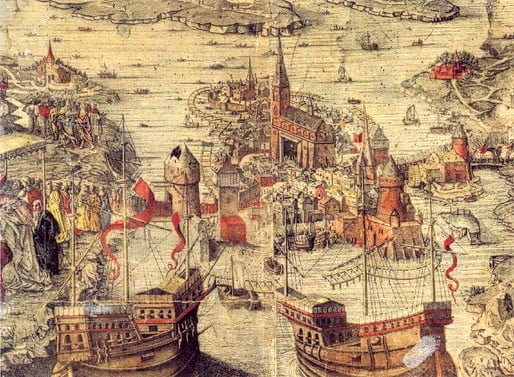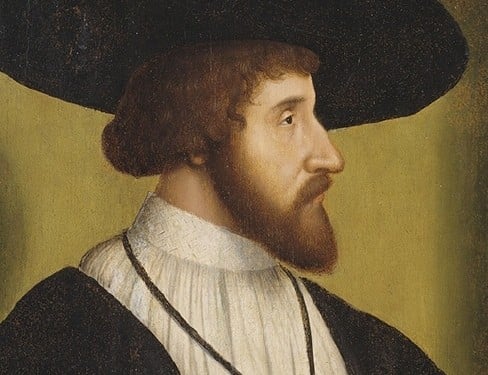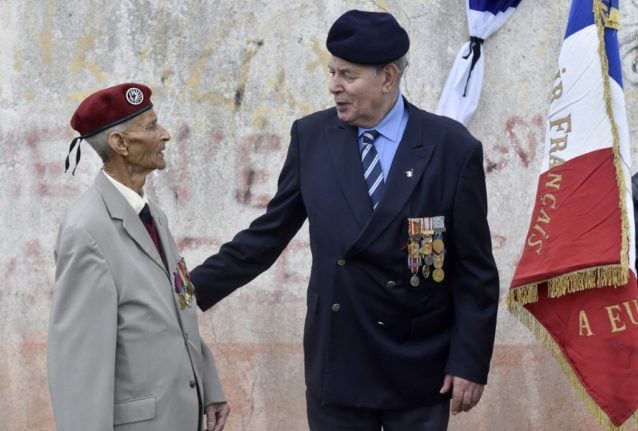
CHRISTIAN
Tyrant or reformer? The Danish king behind the ‘Stockholm Bloodbath’
Five hundred years ago this Sunday, 82 Swedish noblemen were executed at Stockholm castle, leading to the establishment of the Swedish nation state. But was Christian II of Denmark, who ordered the Stockholm Bloodbath, all bad?
Published: 8 November 2020 09:20 CET

Christian II was friends with some of the greatest thinkers of his era. Photo: National Museum
In Sweden, he's known as Christian The Tyrant, b in Denmark, Christian II is also seen as a popular and sensitive King who was before his time.
It was only after the massacre and his expulsion from Denmark that was turned into a bogeyman, partly as a result of a successful propaganda operation mounted by Gustav Vasa, founder of the Swedish state.
Christian II was crowned King of Sweden on November 4th, 1520, after winning a war against rebel Swedish noblemen headed by Sten Sture the Younger, the Regent of Sweden, who wanted to secede from the Kalmar Union.
At the end of three days of post-coronation feasting, 82 people were then executed by beheading or hanging in the Stortorget square of Gamla Stan in a mass execution of nobility and bishops.
According to Erik Petersson, a historian who has written a biography, Christian was not at the time seen as a tyrant at all.
Indeed, people in Sweden did not even see much of a difference between the Swedish and Danish sides of the Kalmar Union.
“If you look at it from the perspective of ordinary people, Christian II was very popular across the board. He had a lot of support among the people, especially in the parts of the union where he had spent a lot of time,” Petersson says. “That was partly in Skåne, of course, but also as far up as Dalarna, and in many other parts of the country.”

The Stockholm Bloodbath as depicted in the Blodbadsplanschen or Bloodbath Poster. Photo: Wikimedia Commons
The Stockholm Bloodbath was Christian's big mistake
The massacre marked a turning point in Christian's fortunes. Up until that point, everything had been going his way. He had reunited the Kalmar Union under his rule, taken control of trade in the Baltic Sea and married the sister of Charles V, the Holy Roman Emperor, joining the powerful Habsburg family.
But according to Lars Bisgaard, associate professor in history at the University of Southern Denmark, Christian gained a lot of enemies in a very short time at the end of 1520.
“The Bloodbath was a game-changer. Partly it led to a rebellion in Sweden at a time when he didn't have any money left to pay for troops. Partly, it was because the Danish nobility began to fear they would see the same fate and lose their heads,” he says.
In Denmark, Christian II had carried through a modernising program, limiting the power of the nobility and strengthening his power as a king.
When Sweden started to break loose from the Kalmar Union, the Danish nobility lost patience, forcing him from the throne, drove him into exile and replacing him with his uncle.
While Christian lost everything, his deposition became part of Sweden's founding story, marking the point at which the country started to become a powerful force in Europe.
How Christian was demonised
The earliest record of Christian being described as a tyrant are in notes taken at Nydala kloster in Småland, where Christian and his followers stopped on the way back from Stockholm, and proceeded to execute the abbott and several monks.
But it was Sweden's next king, Gustav Vasa, who took the phrase and put it the centre of his propaganda campaign, Petersson argues.
Vasa had a print produced of the Bloodbath, which showed gruesome illustrations of beheaded bishops and children, barrels filled with heads, while the Danish king celebrated.
Some 500 years later, the image Vasa created of a ruthless foreigner usurper remains the dominant one in Sweden.
“It was something Gustav Vasa took up and tried to strengthen extremely actively,” Petersson says. “It's interesting how Gustav Vasa's extremely partisan version has become part of Swedish history.”
Historians today still dispute how the massacre took place and on whose initiative. Some believe everything was planned by Christian II, others blame his advisers, others blame a Swedish faction who wanted revenge for previous injustices.
The King himself is not believed to have been present.
Depression and mental instability
According to Lars Bisgaard, some historians speculate that Christian II might have ordered the massacre in a bout of psychological instability.
Historians point out the he was later in life treated for what was then called 'melancholy', probably a form of depression.
There is evidence to suggest that his mood changed when the love of his life, Dyveke, died of poisoning in 1517.
According to the Danish historian Christina Lysbjerg Mogensen, there is even speculation that Christian II may have been bipolar.
“He has periods where he launches into loads of different things and other periods where he is passive and everything seems to fall apart for him,” she says.
“You should also be careful about judging him harder than other kings of that time,” she adds. “It was a brutal period.”
During his exile in The Netherlands, Christian's wife died. When he converted to Lutheranism, Charles V, the Holy Roman Emperor, took his children away from him.
He attempted to retake power in Denmark by invading the country from Norway, but the attempt was quickly vanquished.
Instead he was lured back to Copenhagen, where he was put into house arrest, where he died aged 77 after relinquishing his claim to the throne.
Philosopher king
According to Lysbjerg Mogensen, Christian's interest in ethical and humanitarian questions has been largely forgotten.
In his travels, he forged friendships with both Martin Luther and the learned reformation thinker Erasmus in Rotterdam.
“In many ways, he was a catalyst for spiritual development in Scandinavia,” she says.
Christian allowed the lower ranks in society take their place in the state bureaucracy, was interested in new religious ideas, and was willing to leave the women around him in power while he was out travelling. This angered the nobility.
“He was a very sociable person who was very easy to like, but on the other hand he was neither interested in nor particularly smart when it came to politics,” says Erik Petersson. “Instead he was a people person who was friends with many of the great men of the era.”
Url copied to clipboard!


 Please whitelist us to continue reading.
Please whitelist us to continue reading.
Member comments